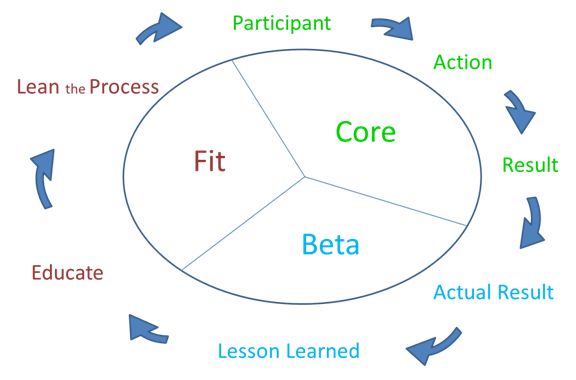
(TheNicheReport) -- I have been an advocate of ‘learning experiences’ for most of my life. I do not believe in failure; I believe in a learning experience. For those of you who have read my column, I often speak of experiential learning, or a lesson learned. Now, I want to develop this idea into an actual process that can be implemented and used daily, and it takes minutes to accomplish. The benefit is a method to document, improve and refine an activity until it meets your standards of success.
In this first part of a multi-part article, I will explain the basic constituents of the Lessons Learned process. In the subsequent parts, I will discuss each component in more detail. What is a Lesson Learned? It is a way of documenting (literally or mentally), analyzing, and improving a process or action to obtain the desired results. Everything we do - every action we perform - either meets, exceeds or fails to meet a preconceived goal as the intended outcome. If the goal is met, no lesson is needed to be learned, because we have mastered that process; goal met. If the goal is exceeded, then we raise the standard for that action and the goal will be met in future performance.
However, if the goal is not met, then how do we determine what corrections need to be made and where in the process are the corrections implemented? The PARALLEL System for Lessons Learned can help. PARALLEL is an acronym meaning: Participant, Action, Result expected, Actual result, Lesson Learned, Educate, Lean the process. This process is divided into three phases, or segments, of actions. The first is the Core. This is where the action is defined. The participant, action and result are defined here. The next is the Beta. This is where the action is analyzed and improvement is formulated. The actual result and lesson learned are analyzed to create an action for improvement. The final phase is Fit. This is where the process is refined, honed and calibrated to work as efficiently as needed or desired. This is where educate and lean processes are enacted.
Each phase is a follow-on part of this series for future Tip of the Month columns. Each segment has a specific purpose. Each segment is a leg of the “three legged stool” that needs to be equal to each other or the stool will not be balanced or even stand. If one phase of this process is ignored then the entire process will not yield the results necessary. Here is a diagram of how the cycle would look when implementing this process to an action to be improved:

The cycle is performed always when the action is in motion. What do I mean? Let’s take a very simple example: I shoot a basketball into the hoop. Now, if I make the shot, then I have mastered the process and no Lesson Learned is required. If I miss, then I analyze the imperfections in my process and learn, then retry the event and master the process. If I do not make the basket the second shot, then the process is again implemented and then, with the new lesson learned and the corrections implemented in my action, I attempt another shot.
This process is repeated as frequently as needed or desired. In reality, this process happens all the time within our natural innate learning process. Humans learn effectively through repetition. This process is a graphic representation of how our brain engages in a learning process. I am the Participant in my example. I shoot the ball into the hoop is the action, and my desired result is to make the shot. If I come up short, then the actual result is different from the desired result and I learned that I need to shoot the ball harder to cover the distance to reach the hoop. I shoot again and make it.
I memorize that amount of effort I need to make the basket form that distance and this is the educate portion. I learn to jump when I shoot, to turn and shoot or to dribble and then shoot, and now I have leaned the process to perfection and after multiple cycles, I have mastered the process. I recommend that you start analyzing everything you do on a daily basis that does not yield a desired result. Implement this process and see if you can improve to the point of mastering. Next month, I will detail the Core phase of this process.
 Stewart Mednick is a seasoned mortgage banker and published author. His writing focuses on relationship development, personal empowerment, customer satisfaction, marketing and sales techniques. Stewart is available for consulting, personal coaching and training sessions. If you have a comment or a question for Stewart, contact him at 651-895-5122 or [email protected]
Stewart Mednick is a seasoned mortgage banker and published author. His writing focuses on relationship development, personal empowerment, customer satisfaction, marketing and sales techniques. Stewart is available for consulting, personal coaching and training sessions. If you have a comment or a question for Stewart, contact him at 651-895-5122 or [email protected]



